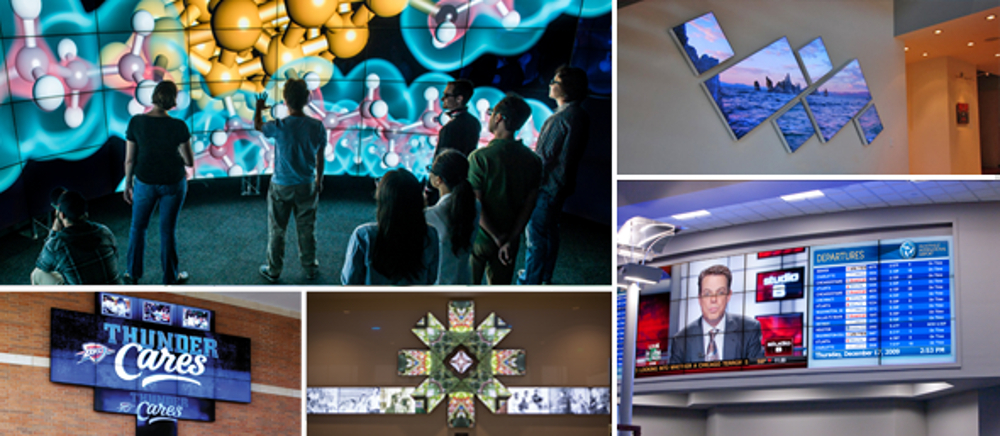Today, video walls displays are increasingly common. They are present everywhere — airports and transportation hubs, museums, retail stores, malls, corporate lobbies, restaurants, schools and universities, office collaboration spaces, and more.
What drives this growth is a combination of better AV equipment performance, smaller footprints, and lower prices. Also, there is increasing creativity in advertising and brand building, combined with the allure of the interactive digital experience. This ensures that the digital image is everywhere…where you work, live, shop, travel, play, and are educated and entertained!
While prices have come down and video displays have become increasingly user-friendly, there is still a lot of confusion as to what technology to adopt for your video wall display.
There are three broad technologies you can adopt, which are:
Rear Projection Video Walls: These are video cubes that stack to create a video wall. This technology is largely seamless, without large bezels or borders between the individual tiled screens that make up the video wall. It is also not uncommon for this display to last for 10 years or more!
Among the disadvantages of this technology are its physical depth, being two feet or more deep. These displays are large and bulky, compared to other video wall technologies. This translates into higher installation costs and more physical space needed to install the video wall.
These models are also expensive and are mainly selected for venues with specific needs and large budgets. These include professional visualisation in control rooms for the military.
Direct-View LED Video Walls: There are now fine-pitch, high-resolution LED video walls that are being used for indoor environments. These video walls are different from the LCD video walls with an LED backlight.
A major advantage of LED video walls are that they deliver seamless video walls — one large image without the appearance of seams or bezels. Brightness and color performance factors are also very good, as is the viewing angle. Overall, LED video walls offer good lifetime performance.
However, the cost of fine-pitch LED video walls (about 4 mm pixel pitch or less) is very high
for the highest resolutions. Also, the highest resolution direct-view LED video walls do not approach the pixel density of LCD displays and are less than ideal when the viewer is close to the video wall, which is common for many indoor applications in general, or for “interactive” or touch-screen applications.
LCD Video Walls: These video walls can be seen in almost every type of application today. With bezel sizes continuing to decrease, the adoption of this technology continues to expand, migrating into applications that previously have been limited to Rear Projection or LED technology.

The LCD video wall price point is the most affordable of the three video wall technologies. The lifetime of an LCD-based video wall system is in the five to seven year expectation range and adequate for most installations.
The seemingly large number of brands and choices can seem confusing when looking for a video wall solution. However, as with any sophisticated technology, look at the market and engineering leaders and use those as your benchmark. Here’s to a seamless video wall experience!
For more information about different video wall technologies and how to install a video wall display for your business,
contact Actis at 022-30808080 or at contact@actis.co.in
(Content and images courtesy: www.planar.com)



1 Comment
B
Before choosing which technology to be used, you must first consider how it will be used, as this will affect the overall design. This includes the location on which it will appear and the actual type of content that will be displayed.